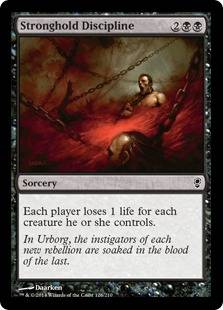
Combos Browse all Suggest
Legality
| Format | Legality |
| 1v1 Commander | Legal |
| Archenemy | Legal |
| Block Constructed | Legal |
| Canadian Highlander | Legal |
| Casual | Legal |
| Commander / EDH | Legal |
| Commander: Rule 0 | Legal |
| Custom | Legal |
| Duel Commander | Legal |
| Highlander | Legal |
| Legacy | Legal |
| Leviathan | Legal |
| Limited | Legal |
| Modern | Legal |
| Oathbreaker | Legal |
| Pauper | Legal |
| Pauper Duel Commander | Legal |
| Pauper EDH | Legal |
| Planechase | Legal |
| Premodern | Legal |
| Quest Magic | Legal |
| Vanguard | Legal |
| Vintage | Legal |
Stronghold Discipline
Sorcery
Each player loses 1 life for each creature he or she controls.
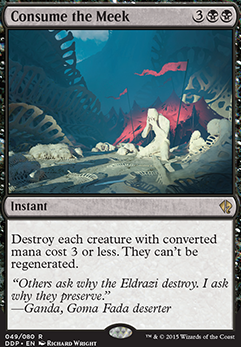
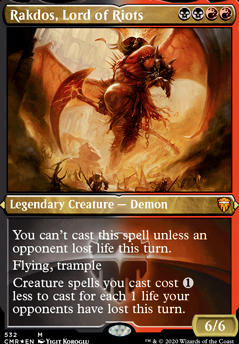

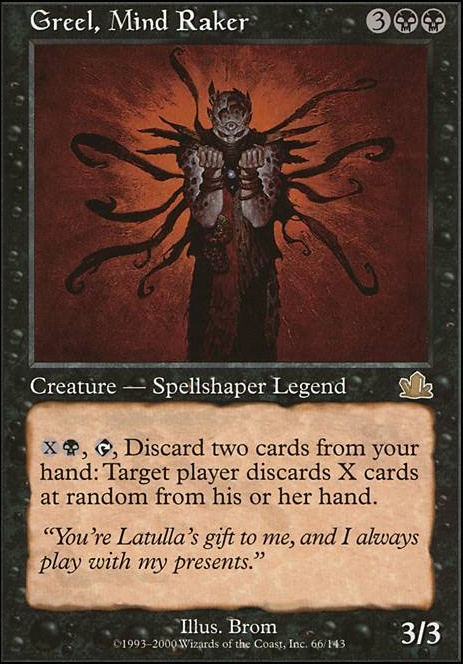
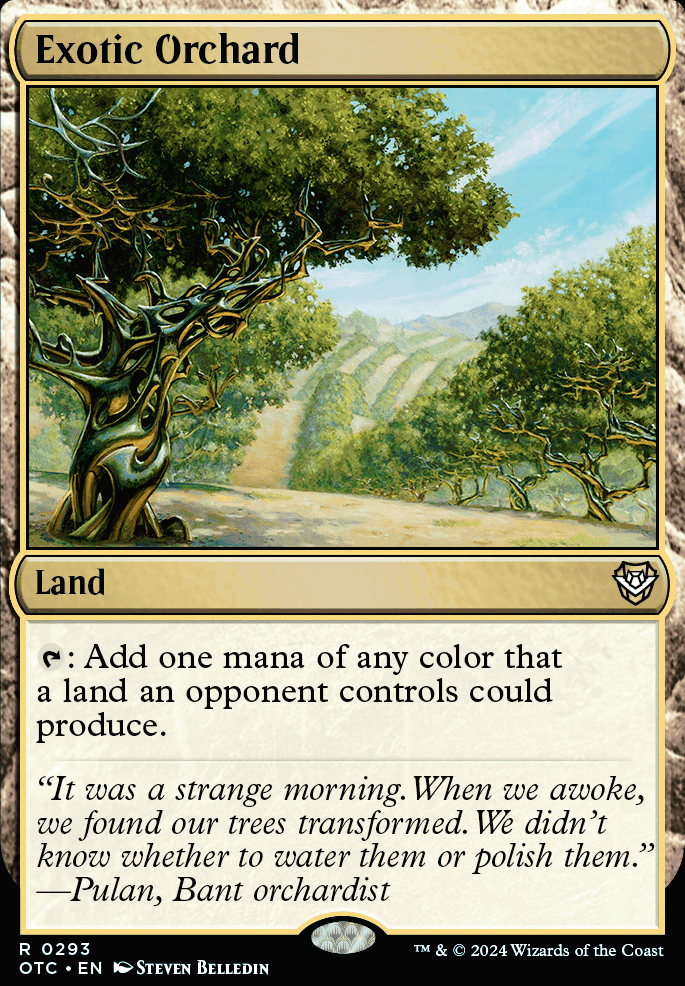
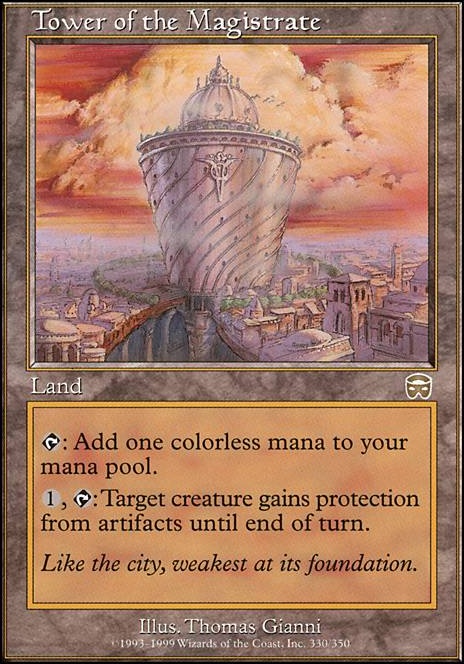
Fuzzy003 on
 Thantis' Creature Donation Station
Thantis' Creature Donation Station
2 years ago
Considering how many tokens go to opponents, maybe Stronghold Discipline?
Fuzzy003 on The Blood War of Baldur's …
2 years ago
Stronghold Discipline says it's enough to lose you the game...
Freakjob on
 Queen Marchesa: Politics, Aikido, and Control
Queen Marchesa: Politics, Aikido, and Control
5 years ago
Hey there, love the deck, had it on my watch list for ages now.
I'm in love with this interaction and wanted to get your thoughts on it: Repercussion and utilizing damage-based sweepers such as Incite Rebellion and Blasphemous Act . Seems like a perfect way to turn an enemy's strength into a weakness. I know you don't like wraths, but this would be a win condition similar to Rakdos Charm. Obviously the deck needs to be lighter on creatures than your opponents' decks, and might be a little too cute, but if you're already encouraging combat between your opponents' creatures, this would help speed up the clock.
On a related note, I'm curious how you draw the line between damage redirecting rattlesnakes such as Stuffy Doll , Spitemare , Mogg Maniac , and Truefire Captain , compared to cards such as Kazuul, Tyrant of the Cliffs and Marchesa's deathtouch? I read your comment where you say opponents have to attack you to get Stuffy Doll to work, but by having a clear, "you know exactly what will happen to you if you attack me," card laid out, much like Master of Cruelties, people should choose to attack elsewhere, therefore fulfilling its purpose as a rattlesnake; what's the difference?
Also wanted to bring up a few cards I haven't seen you or anyone else discuss:
Outmaneuver - found this while digging, and it looks HILARIOUS. Use on an opponent's attack against someone else to turn a blocked attack into a slaughter.
Similarly, because I love infect, Tainted Strike to turn a painful attack into an unexpected lethal one. Again, usable on an opponent's creature, your own Gisela, or a Sunforgered+Boros Charmed anything.
Traitor's Roar - expensive CMC, not an instant, but, another option for anti-tall tech, and can be conspired for even more massive damage. Not great, just wanted to mention it. In a similar vein, Agonizing Demise .
Searing Rays - another I found and just wanted to mention, since it's not great. Almost always going to be a worse Stronghold Discipline , but one mana cheaper, and useful for a mono-color heavy meta (Elves, etc.)
Lastly, because it's so beautifully perfect for an Aikido deck in art, flavor, effect, flavor text, everything: Turn the Tables . Just look at that art; the casual and hilarious smackdown! Read that flavor text; confident as hell! I know, 5 CMC is a lot to hold up, but I love it too much, picked one up in foil. I'm sure you can appreciate it, even if you'd never run it.
Shame you changed to such a drastically different meta; I've read what kind of decks you face now, and those are certainly trickier to "Aikido" around to victory. My meta is much more creature-combat focused, so I'm looking forward to something along your initial lines!
Again, great deck!
precociousapprentice on
 Queen Marchesa: Politics, Aikido, and Control
Queen Marchesa: Politics, Aikido, and Control
5 years ago
Check out Stronghold Discipline. Not Rakdos Charm, but still solid.
precociousapprentice on
 Queen Marchesa: Politics, Aikido, and Control
Queen Marchesa: Politics, Aikido, and Control
6 years ago
Suns_Champion, thanks for the upvote and the very kind words. I appreciate it. Here are my initial answers to your questions. I may have other answers as I think more about your questions, but these are my answers based on what I have seen so far.
First, the deck is fun, and if you already win most games, this deck will probably not change that, unless you are seriously cutthroat already. It basically just evens the power of most decks until the last round or two, and plays as a 75% deck at every table I have found it. I probably wins more than that, but this is because I am the most experienced and obsessed player in my normal meta (it has seen 2 different metas so far, due to a move) and when I show up at random tables, no one really expects it. It has become more popular to play Queen Marchesa, but not enough to be that big of a deal. I would love people to build it and give me feed back on how it does at more tables than I can reach. Even with the concerns about inexperience in your meta, it can withstand more hate than it seems, and while the intention is to ride below the radar, even if it doesn't, it can still often hang. If they waste resources on your death touchers, even the Queen, something else will get them. The Queen and her deathtouch army definitely add to the strategy, but the deck runs fine if they are taken out. Something gets them in the end.
Second, as for Swiftfoot Boots and Lightning Greaves, I didn't include them for two reasons. First, I needed the slots. It is a really tight list. Second, removing the Queen is less of a problem than you think. Bring her back out and you are the Monarch again. This provides some disincentive to take her out, at least for the guy who is currently or soon will be the Monarch. She is fairly inexpensive with a CMC of , so this can happen a few times before it gets truly out of hand. For a minor third reason, you only get half of the benefit of those cards when playing with Queen Marchesa, since she already has haste. I found better uses for those slots.
Third, Price of Progress, Anathemancer, and Acidic Soil are all just cards with a low CMC and a high potential damage for the average meta. Commander is notorious for non-basics. If this is not worth it in your meta, think about a resource, situation, or game characteristic that is very common in your meta, and hit them for that. If a bajillion creatures are often on the board, try mainboarding Insurrection, Incite Rebellion, and Stronghold Discipline. If people draw a ton of cards, try Underworld Dreams and Sudden Impact. Go after common game states and the usual overreach for your meta. Take advantage of the way that players build their decks to work. Use their strategy to take them down. Become one with their deck, let their power become yours. There are many ways to do this, I have just seen that excessive lands, especially nonbasic lands, can be a source of power for my offense, and Price of Progress and Anathemancer are usually just really efficient bombs.
Fourth, there have been a few times I have really wanted Arcane Lighthouse. It is pretty amazing. This has been especially true against really aggressive decks, especially voltron decks, since Greaves/Boots are standard issue for voltron. That is definitely a consideration, and probably could be fit in if shroud/hexproof are a problem.
Fifth, Scavenger Grounds is a great card, and if graveyard is a serious threat in your meta, it is a good include. I find that with Bojuka Bog, Shred Memory, and Rakdos Charm, I am often covered well enough. If it got further out of hand with the graveyard shenanigans, I would possibly include Scavenger Grounds, or maybe Rest in Peace.
Sixth, Pacification Array is pretty weak. It occasionally allows for something surprising, since it is often forgotten about, and is otherwise pretty cheap. It probably gets played from my hand as a sorcery speed tap one creature or artifact card for immediate advantage more than any other way, but it does act as a decent Kor Haven replacement with some frequency. Think of it like surprise tempo, defense, and politics all wrapped up in a relatively cheap package. I like how flexible it is, being used for both offensive and defensive uses, as well as politically by defending other players (rare) or opening a line of attack against a common opponent (more frequent) so that I can encourage that attack to point away from me. It is honestly still in there because I have just not taken it out again, since it has come out before, but you may be overlooking it's subtle power. It will get replaced with Forcefield when I can get one. With a deck as pimped as I have made this, Forcefield kind of needs to be in there. It will be some day. For someone else's deck, it could be just about anything.
Thanks again for the kind words. I look forward to seeing your version when you make it. It really is a ton of fun to play, and never disappoints, even when it loses.
precociousapprentice on
 Queen Marchesa: Politics, Aikido, and Control
Queen Marchesa: Politics, Aikido, and Control
7 years ago
So the decision to go without Sol Ring was confirmed by consensus today. I will be removing it. I will probably not replace it with another mana rock, I feel like I have enough, and I will probably not miss one, even if it is the powerful Sol Ring. This frees up a slot for something interesting.
Let's talk Wishes and Wishboards. Per the mtg.gamepedia.com reference, "A Wishboard is a sideboard for a deck that is intended to be used in conjunction with the Judgment Wishes (Burning Wish, Living Wish, Cunning Wish, Death Wish, or Golden Wish), or Future Sight's Glittering Wish. Often, these sideboard cards are not intended to ever be sided into the main deck between games; rather, one of the Wishes is used to retrieve the cards instead. The intent of this strategy is to not devote maindeck space to cards that may be irrelevant in any particular match-up. Instead one trades game tempo for the ability to have the correct answer every game. This is, of course, assuming that the Wishboard contains the proper answers."
Wishes are controversial. The main arguments against them are that they can be abused if they are allowed to be used to retrieve any card you own, without restriction; that they are not universally played, giving those who play them an unexpected advantage on other players; and that they are another thing to slow down a game with searches. Many people believe that Wishes are very overpowered. In EDH specifically, Wishboards are often stated to be against the spirit of the format, changing a 100 card singleton format into a 110 card singleton format. Those who dislike them ask why we need 110 card slots, asking, "Aren't 100 cards enough?" Those who are against the use of Wishes are often very adamant and very vocal about it.
The arguments to counter these objections to Wishes are pretty straightforward. The first counter is that restricting the searches to only the allowable but optional sideboard, eliminating the potential for abuse of an entire collection worth of cards, and requiring thoughtful inclusion of cards chosen for this purpose, will keep the abuse and annoyance down to a bearable level. The second counter is that many cards are not "universally" played, often appear as "secret tech", but that acknowledging the use of Wishes prior to play is more than fair, given that many players do not even give this courtesy to the opponent regarding their "secret tech" prior to play, but that advantage through card choice is always an element in Magic, and there is no difference here. The third counter is that, while searches do slow the game down, a search of a small and restricted sideboard chosen just for this purpose is much less of a drain on time than many cards that are more universally played, such as common Tutors and even Fetches or green Ramp cards. To search through 10 or 15 cards for an answer, without needing to shuffle your deck following this, is a very small burden on game time, compared to many other well accepted cards. I will address their power level below, but any argument about the spirit of EDH is often a complete waste of time, and usually degenerates into a statement of "I like my EDH like this, and not like that." I will not address the spirit of EDH.
The usual comparisons made between Wishes and other cards are both to modal spells and to common Tutors. I would say that they are similar to both, probably closer in deck construction to Tutors but closer in play to modal spells, and they carry their own unique characteristics not shared by either modal spells or Tutors. Let's compare some cards to see how this could be true.
Tutors and Wishes are probably closest for deck construction purposes, but the results in play are quite different. Tutors and Wishes are put into a deck with the idea of allowing searches for specific cards included in the deck or sideboard, respectively. Compare Mystical Tutor vs Cunning Wish. Both would potentially be included in decks that want to play whatever card is needed from a specific set of instants, at whatever time the Tutor or Wish is drawn. The difference is that Wishes are much less powerful in this role than Tutors. When using a Wishboard, Cunning Wish will have less targets than most tutors, and all the targets are inaccessible for drawing. Given that, if you want to play a specific combination of instants, or play a specific one as quickly as possible, then the fact that Mystical Tutor can essentially act as a second copy of whichever of those instants is needed, and given that for Cunning Wish to have access to an instant, it needs to be inaccessible to normal draw due to being, by necessity, a card from outside the deck, it can never act as a second copy of any card. This means that Cunning Wish can't really function to speed up drawing a combo, and can't really increase consistency. Tutors are far more powerful than Wishes for enhancing the consistency in a deck than Wishes, at least as far as a singleton format goes. All bets are off if you are allowed 4 copies of a Wish in the main deck, 3 copies of the target in the main, and one copy in the sideboard. that essentially gives you 7 chances to draw any specific target card. This is not a factor in a singleton format, and a Wish can only ever search for a card that you cannot draw at all.
Wishes actually play more like a DIY modal spell than a Tutor. Consider Cryptic Command vs Cunning Wish. Cryptic Command allows you to choose two from a list of four great options. With Cunning Wish, you can choose one of up to ten options preselected from a list of all possible instants in the game (including Cryptic Command if you choose). Drawing and playing Cunning Wish substitutes the chosen instant, giving options but not an extra copy of any of the list of options. Consistency is in no way increased with Cunning Wish, in the same way that consistency is not increased with the use of modal spells like Cryptic Command, unless it can be used as a duplicate of another spell in the deck. Wishes behave in play similar to modal spells that you design yourself out of other complete cards.
The difference between Tutors and Wishes is that the target cards for Wishes will never be drawn, and the difference between Wishes and Modal spells is that a Wish can access more options than the preselected list printed on the Modal spell. This places the power of a Wish somewhere between that of a Tutor and a modal spell. That is arguably pretty powerful, but this is not the extent of it. The true difference and power of the Wishes is that their targets do not need to be in the deck. Targets can be cards that you would never include in the maindeck or would frequently be a dead draw, but would occasionally be an absolute bomb. Eliminating or decreasing the frequency of the dead draw can be considered a way to increase consistency, just not the way that Tutors usual increase consistency. You can also design your Wishboard with it's own mana curve, allowing the wishboard to be useable at any point in the game, decreasing the dead draw factor of cards even further. Wishboards can also be designed to incorporate a toolbox, effectively creating the opposite of a dead draw.
For Queen Marchesa: Politics, Aikido, and Control, Wishes could fit in this deck really well. I could easily add Tutors, but it is not lacking in consistency, so I am not sure this will enhance the deck any. I could add some modal spells, and I have several, but the ones not already in the deck don't seem to have enough options that would enhance the deck. I had been resisting adding some non-modal spells that were similar to some of the modal spells because they did not have enough use in that one mode to justify the card slot. By using a Wish or two, I could create a few DIY modal spells out of the single use spells that I thought that the deck could not accommodate, increase the options available, and enhance the complexity and interesting lines of play that this deck facilitates. Spells like Exsanguinate, Stronghold Discipline, Acidic Soil, Browbeat, Wheel of Fortune, Vindicate, Past in Flames, Damnation, Austere Command, and many other sorceries would all be great bombs as possible targets. Both Burning Wish and Death Wish would potentially be options for inclusions as Wishes. Toolbox options could include the archetype hosers like anti-graveyard antics cards, huge turnaround cards that I would never include otherwise like Reverse the Sands or Insurrection, and many other possibilities. This is an interesting new way of potentially developing this deck.
So what do you all think? This is obviously not a direction that every meta would facilitate, but I think it could be fun to explore. Are there cards that would be very useful in the Wishboard that would never fit in the main deck? I listed some that are my initial thoughts, but I am interested in any help that could be offered. I am interested in wincons, bombs, and toolbox cards. Given that there will only be two Wishes included, how many of the sorcery wincons could be moved to the Wishboard without compromising the offensive capabilities of the deck? Thanks ahead of time for any advice offered.
precociousapprentice on
 Queen Marchesa: Politics, Aikido, and Control
Queen Marchesa: Politics, Aikido, and Control
7 years ago
Ok, all. I am an idiot. I had a realization in play yesterday that should have been obvious, but I had missed it. Ayli, Eternal Pilgrim was meant to be both Rattle Snake and spot removal, but the deck was not built around it, so she never got going. I focused on the spot removal, and when she was removed from the deck, I replaced it with repeatable creature spot removal, thinking that would at least come close to replacing the value of Ayli, Eternal Pilgrim. What I didn't fully grasp was that the weakness of slow speed of the removal, along with the durability of the removal was the problem, and that Assassins would never be able to make up for this. I was sitting on one of the best removal spells that are available in Queen Marchesa's colors, and I recognized this at least enough to put it into a sideboard slot because I just couldn't cut it all the way. I think I should just put the good spot removal back in, and skip all this getting fancy with creatures for removal BS. Since my Rattle Snake and Pillow Fort defense is already very strong, I am not sure why I am worrying about it so much, especially since I keep strengthening it with the most subtle of subtle Pillow Fort cards like Duelist's Heritage, Slayers' Stronghold, and Key to the City.
Right now, I think I just need to consolidate what I think this deck does best, make sure that I bring enough of both the offense and defense that this deck works off of, ensure that I am optimally countering common deck archetypes in ways that are synergistic with the rest of the deck, and not get distracted with complicated additions.
With that said, I have a sideboard that I have constructed of cards that are meant for tuning this more specifically to different metas, and for including cards for combating common archetypes that my meta does not contain. Even if I don't use this as a common sideboard between games, this is my list of cards to adjust for changing metas as I go between them, likely usually between sessions.
Changes that I plan:
Main Deck changes should be to consolidate the theme of the deck, removing weakness in favor of the strengths.
Out:
Kiku, Night's Flower, Royal Assassin. I love the art on Kiku, but she was a distraction. Neither will be the bomb that I want, neither is subtle enough for a non-bomb card.
In:
Stronghold Discipline - Rakdos Charm is a huge part of my offense, and wins a ton of games. Stronghold Discipline is essentially another copy. Unconventional offensive plays are what this deck does best. Consolidate around the deck's strengths.
Utter End - One of the best spot removal spells available. Control is one of the things this deck does best, especially surgical removal. Consolidate around the deck's strengths.
Sideboard changes should compensate for different metas and allow me to combat the weaknesses in the deck with respect to commonly played archetypes that are just not that common in my usual meta. I am OK with unfairly destroying decks in metas that are not my usual meta.
Out: Utter End - Into the Main Deck!
In: Rest in Peace - The best at what it does, kills a lot of combo, storm, spellslinger, value engines, reanimator, etc...
So, what does that leave us with?
Ramp and Fixing: Lots of Ramp and Fixing that is tuned and synergistic with the rest of the deck, as well as a curve that allows us to bring out early big plays. Gift of Estates and Tithe double as card draw late game, and our unconventional manabase is highly synergistic with the rest of the deck.
Draw and Tutoring: Enough Draw and Tutoring to make the deck consistent and holding enough answers for every threat or weakness, without being obtrusive or conventional enough to be obvious about it. Three all star players in this list are Shred Memory, Key to the City, and Sea Gate Wreckage. Uncommon tutors and draw with huge impact in this deck without ringing any danger bells for most players. This suite makes my already versatile card list even more versatile.
Defense: A 25 card subtle and somewhat unconventional Pillow Fort and Rattle Snake defense with a low curve, the potential to be used offensively, and which is synergistic with itself as well as my offense. Back this up with a nice Fog suite, making my defensive wall extend into my hand so as to not have all of it sit on the battlefield to be effective, and bringing it's own offense in the right circumstances. Add to this a control package that is complete with a very strong and versatile spot removal suite, some reactive board wipes that have offensive uses, and multiple cards to allow us to protect our board state, including counterspells in Mardu colors!
Offense: The offense is structured to take advantage of typical board states and the strengths of my opponents with cards that have outsized effect for their costs. It is designed to be huge Aikido bombs against any Big Mana, Big Creature, Big Army, Big Hand, or Big Attack deck. It is structured in pairs of cards for each of these, including Acidic Soil/Price of Progress, Backlash/Delirium, Rakdos Charm/Stronghold Discipline, Sudden Impact/Toil / Trouble, Deflecting Palm/Comeuppance, with Arcbond, Batwing Brume, and Eye for an Eye all reinforcing this array of counterattacks. This reactive offense is backed up with a couple of big bomb offensive attacks in the form of Master of Cruelties and Hatred, a couple of midrange beaters in the form of Serra Ascendant, Gisela, the Broken Blade, and Kazuul, Tyrant of the Cliffs, and an army of smaller defensive and utility creatures. Bring in combat tricks and enablers like Duelist's Heritage, Slayers' Stronghold, Key to the City, and Rogue's Passage to act as later game silver bullets, and the offense is quite versatile.
Sideboard: Packed with Combo hate, a counterspell suite of my own for Counterspell and Blue Control hate, Graveyard Antics hate, and extra offense in the form of Dark Depths as an uncounterable big beater and Exsanguinate for big burn.
In all, I think I am pretty satisfied with where the deck now sits, and will likely consider this list to basically be the core deck. Testing will confirm, I think I have chased down all the areas that needed shored up, and I feel like this is, at the moment, a completed list.
precociousapprentice on
 Queen Marchesa: Politics, Aikido, and Control
Queen Marchesa: Politics, Aikido, and Control
7 years ago
To be totally honest, I just don't see Contagion Engine, so it has never bothered me. I will likely only keep one of them, but I want to try both.
I am also reconsidering Stronghold Discipline. I have never playtested it, and I had figured that Rakdos Charm was vastly superior to it, so I never tried it. The thing is, I win off of Rakdos Charm way more often than I should. Granted, it is searchable with both Sunforger and Shred Memory, but maybe I am overlooking the fact that the offense it would bering would be worth the higher cost, the inability to be tutored for with Sunforger and Shred Memory, the fact that it is a sorcery and not an instant, and the fact that it has no other uses. If that brings enough offense, it can be worth it.








